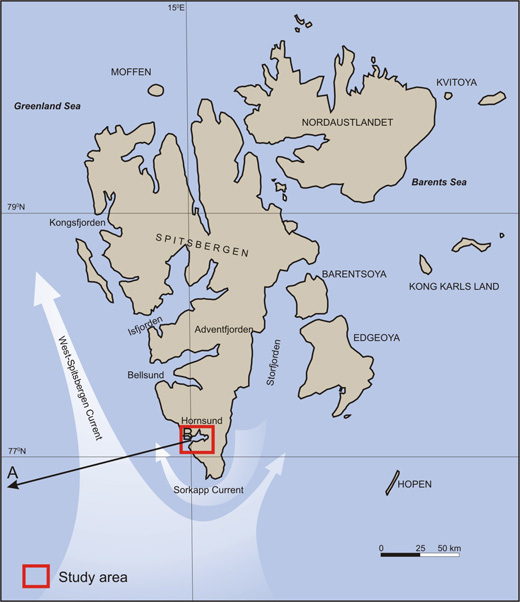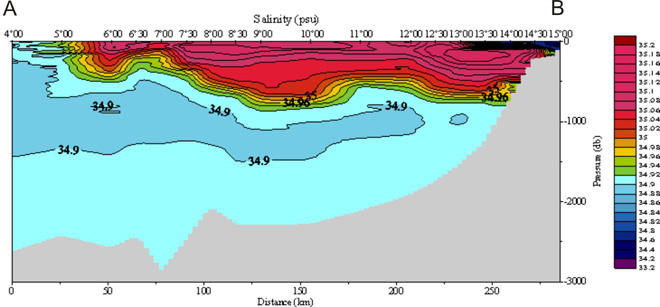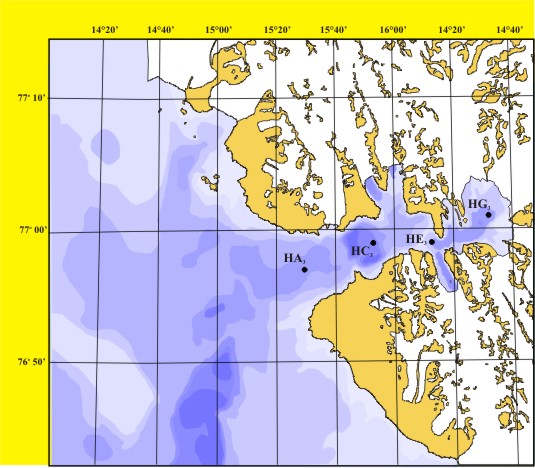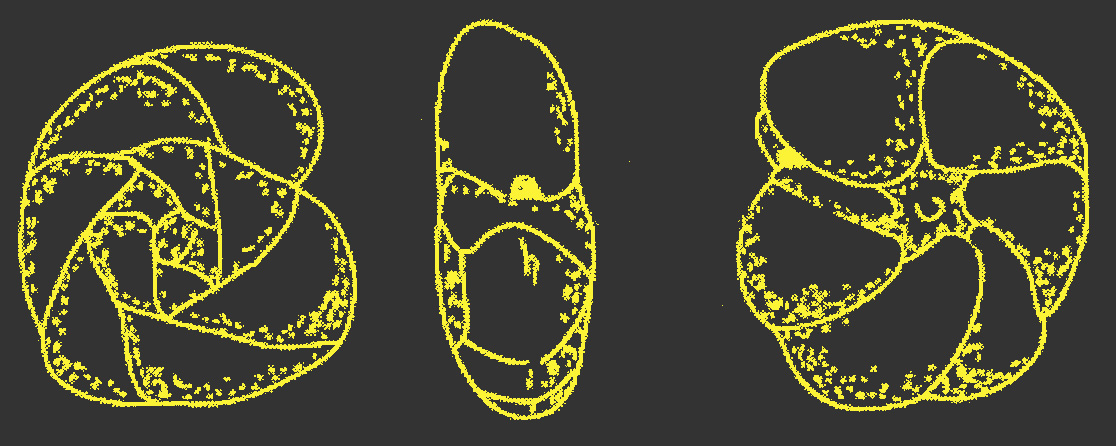* Institute
of Oceanology Polish Academy of Sciences.Sopot 81-712, Powstanców
Warszawy 55, Poland
** University of Gdansk, Faculty of Biology, Geography and Oceanology, student
of Oceanography
Central part of Hornsund
Studies of Arctic benthic foraminifera permit
to our understanding of high latitude marine environment. Diagnosis of
relationship between recent
foraminifera distribution and environment condition also may provide modern
analogues for fossil assemblages of the Holocen, when climate and hydrological
condition of Northern hemisphere varied from warm Atlantic period to cold
a “Little Ice Age”. Climate warming from the beginning of XX
century has caused the retreat of many Svalbard glaciers (Lefauconnier and
Hagen 1990, Ziaja 2001, Hagen et al. 2003) and, in consequence, increase
of turbid meltwater supply to the fjords and bottom sediment accumulation
rate. This process is especially intensieve during the last ten years (Zajaczkowski
et al. 2004). Benthic foraminifera distribution in the Hornsund is known
briefly by Hald and Korsun (1997). The knowledge about foraminifera distribution
patterns in the particular layers of Hornsund sediment is very poor. It is
known that benthic foraminifera are not confined to the surface layers of
the sediment and in some cases the mojority of their standing stocks can
be encountered below sediment surface (Murray 1992, Hunt and Corliss 1993,
Moodley et al. 1998). This phenomena was initially interpreted as the result
of passive transport by storms, currents or bioturbation (Richter 1964, Collison
1980, Moodley 1990) however, in recent foraminiferal study, both: environmental
and in laboratory, many authors become convinced that foraminifera are capable
of active migrating through sediment in direct response to chemical and physical
gradients in the pore water (Alve 1995, Alve and Bernhard 1995, Moodley et
al. 1998). The aim of this study is to present new foraminifera data in dependency
of the distance from glacier fronts and rate of sediment accumulation in
different layers of the Hornsund sediment.
























